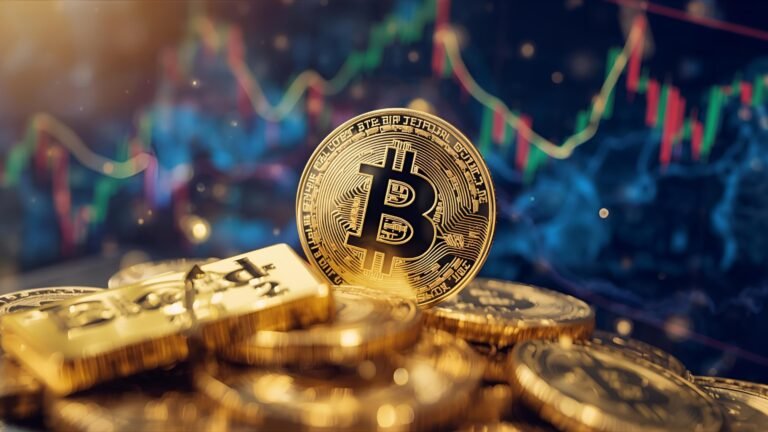The markets speak a language of their own, and lately the message has been loud and clear: political currents are powerful enough to push entire asset classes to fresh peaks. In recent months, political waves—from election upsets and coalition reshuffles to policy pivots and diplomatic flashpoints—have set off a synchronized surge that sent the Nikkei, bitcoin, and gold to or near record highs. This unusual alignment across Japanese equities, digital assets, and safe-haven metals reveals something important about today’s investing landscape. Markets are simultaneously pricing faster change, greater uncertainty, and the possibility of both looser and tighter policy depending on who is in charge and where.
This article explains why politics can pack such a punch, how each market responds to shifting headlines, and what practical steps investors can take to navigate the cross-winds without overreacting to noise. We will explore the mechanics behind the Nikkei’s breakout, bitcoin’s renewed momentum, and gold’s relentless climb, along with the LSI concepts that matter most—safe-haven demand, risk-on rallies, central bank policy, real interest rates, currency volatility, and geopolitical risk premia. By the end, you’ll understand not only what is moving, but why the same political waves can send different assets higher for different reasons.
Politics is the catalyst why markets move on waves
Political events are not just headlines; they are catalysts that alter cash flows, discount rates, and risk premia. Elections change fiscal trajectories. Cabinets and coalitions alter regulatory regimes. Geopolitics influences trade lanes, commodity supplies, and defense spending. Whether markets take a risk-on or risk-off stance depends on how these forces interact with liquidity conditions, inflation expectations, and central bank signaling.
Elections, mandates, and policy pivots
When voters deliver a decisive mandate, markets often assume clearer policy direction. That clarity—real or perceived—reduces uncertainty and can compress the equity risk premium, lifting stock indices such as the Nikkei 225. Even the hint of monetary easing, tax reform, or structural deregulation can create a rational basis for re-rating sectors tied to domestic demand or export competitiveness.
Conversely, hung parliaments or narrow majorities may increase policy uncertainty, but paradoxically still support risk assets if investors expect bigger deficits, fiscal stimulus, or infrastructure outlays. The key is the net effect on growth and real yields. Markets are forward-looking; they don’t wait for laws to pass if the direction of travel seems credible.
Geopolitics, risk premia, and safe-haven flows
Tensions at chokepoints, sanctions regimes, and defense escalations widen risk premia for some assets while boosting others. Gold typically benefits when investors worry about escalation, currency debasement, or systemic risk. Bitcoin, long touted by advocates as “digital gold,” can also attract flows when capital seeks censorship-resistant or non-sovereign stores of value, especially if policy chatter implies financial repression or tighter control over cross-border transfers. The interplay between geopolitical uncertainty and safe-haven demand explains why gold and bitcoin can rally together even when their user bases and settlement rails differ.
Why the Nikkei breaks out when politics shift

Japan’s equity market has a unique sensitivity to both global liquidity and domestic policy signals. When political winds suggest reforms that encourage investment or signal continuity in corporate governance changes, international investors notice. Add in yen dynamics, and the stage is set for the Nikkei to climb.
Yen weakness, exporters, and earnings translation
A softer Japanese yen amplifies overseas profits for Japan’s world-class exporters in autos, semiconductors, machinery, and consumer electronics. Because a large portion of Nikkei constituents earn in dollars or euros, a weaker yen can raise earnings per share mechanically when translated back into home currency. Political developments that imply stability at the Bank of Japan, a careful normalization path, or ongoing tolerance for accommodative conditions can all influence yen expectations. When investors see the potential for steady nominal GDP and supportive policy, they assign higher multiples to sectors tied to global demand.
Corporate governance and ROE renaissance
Over the past decade, corporate governance reforms nudged companies to focus on return on equity (ROE), unwind cross-shareholdings, and improve disclosure. Political continuity around these reforms reassures global allocators that Japan’s transformation is durable. The result is a rerating of value names once dismissed as “cheap for a reason.” As more firms embrace capital efficiency, stock buybacks, and higher dividends, the Nikkei’s fundamentals look less cyclical and more structural. Momentum then feeds on itself as foreign capital rotates from underweight to market weight, and domestic savers channel funds into equities via tax-advantaged accounts.
Foreign inflows, ETF channels, and household participation
Political narratives also shape household behavior. Confidence in reforms increases participation in equity markets, amplifying ETF flows. Internationally, global index providers and sovereign wealth funds respond to policy credibility by lifting allocations. Because Japan’s market depth is significant yet still sensitive to marginal flows, concerted buying can produce outsized index moves—especially when aligned with LSI forces like portfolio rebalancing at quarter-end, or factor rotations into quality and large-cap growth.
Bitcoin’s bounce: policy narratives meet liquidity cycles
Bitcoin is where politics, macro, and technology collide. The asset’s finite supply, open settlement, and 24/7 trading attract both believers and tacticians. When political waves suggest potential fiscal expansion, heightened bank regulation, or cross-border restrictions, the narrative of digital scarcity can shine.
Adoption, ETFs, and the institutional on-ramp
One reason bitcoin hits record highs during political episodes is the maturation of the market structure. The availability of regulated ETFs and custodial solutions lowers the barrier for institutions that once sat on the sidelines. Political noise can accelerate institutional adoption as boards seek uncorrelated assets or as family offices allocate small sleeves to digital assets as part of an inflation-hedge or tail-risk bucket. The presence of these vehicles also means that flows can swell quickly when sentiment flips, creating momentum that reinforces the headline narrative.
Real yields, liquidity, and the macro beta
For all the talk of bitcoin’s independence from the legacy system, pricing still reacts to real interest rates and U.S. dollar liquidity. Politics influences both. If elections point to fiscal largesse, markets may anticipate higher deficits and, depending on central bank posture, a future with easier financial conditions. Risk assets—including crypto—often re-rate when liquidity is abundant and real yields soften. When political outcomes make a hard landing less likely, traders lean into risk-on bets, and bitcoin’s high beta does the rest.
Gold’s relentless record run in a world of uncertainty
Unlike bitcoin, gold has a centuries-long track record as a safe-haven asset. Political upheaval reliably channels capital toward gold because it sits outside any single government’s control, has deep and liquid markets, and is held extensively by central banks.
Real rates, currency hedging, and central bank buying
Gold’s strongest fundamental driver is the level of real interest rates. Lower real yields reduce the opportunity cost of holding a non-yielding asset, while higher inflation expectations raise its appeal as an inflation hedge. Political waves that hint at larger deficits, monetary accommodation, or currency volatility can push investors toward gold as a store of value. In addition, steady central bank purchases—particularly from emerging markets diversifying reserves—provide a durable bid that can power through periodic corrections.
Crisis insurance and portfolio ballast
Investors don’t need to believe in imminent catastrophe to buy gold. They simply need to regard it as crisis insurance and portfolio ballast. In an era of fragmented geopolitics and supply-chain realignment, diversification across stores of value looks prudent. That is why political headlines can propel gold higher even when equities and crypto rally simultaneously; the asset serves a different role in a diversified portfolio.
Cross-asset mechanics: how records happen together
At first glance, it seems odd that the Nikkei, bitcoin, and gold could all rally to records at once. But their macro drivers can coincide under specific political conditions. When politics signal growth-friendly spending, tolerable inflation, and policy continuity, equities rally. If the same politics hint at medium-term currency debasement or fiscal slippage, gold rallies. And when the policy backdrop implies abundant liquidity, bitcoin rallies. The common denominator is that investors seek both upside participation and downside protection, assembling a barbell across risk assets and safe havens.
The dollar, yields, and the global feedback loop
The U.S. dollar and Treasury yields mediate this process. A softer dollar supports commodities and non-U.S. equities, while falling real yields supercharge gold and high-beta tech. Japan’s exporters benefit if the yen declines relative to the dollar, especially when global demand is firm. Crypto often tracks the liquidity impulse more than any single country’s politics, but political events that steer the dollar or yields indirectly steer bitcoin as well.
Volatility regimes and reflexivity
Markets are reflexive. Volatility regimes change when investors collectively decide that an event reduces or raises uncertainty. If politics compress implied volatility, carry strategies flourish, and risk-on exposure increases. That hunt for yield can push all three assets higher. When politics elevate tail risks, gold’s bid deepens and bitcoin’s “digital gold” narrative tightens, while equities may wobble or, if growth-positive, still advance. The dance among these forces explains why record highs can cluster across disparate assets.
Also Read: Solana ETF Files for Trading on Cboe BZX Exchange
Positioning strategies when politics drive price

Investors need frameworks, not forecasts. Politics introduces path dependency; the same headline can mean different things depending on where we are in the business cycle and policy cycle. Positioning should respect this complexity.
Core-satellite construction with explicit roles
A practical approach is a core-satellite portfolio. The core holds broad global equities and high-quality bonds to anchor long-term goals. Satellites target specific exposures—Japan equities for governance reforms and exporter leverage, bitcoin for convex liquidity beta and digital scarcity, gold for tail-risk hedging and inflation protection. Each sleeve has a defined role, size band, and rebalancing rule. When political waves swell, the rules—not emotion—govern changes.
Using options for risk management, not speculation
Options can express views with bounded downside. For example, investors who believe Japan’s reform momentum will endure but fear currency swings can buy put spreads on a Japan ETF while leaving upside intact. Those wary of crypto drawdowns can consider covered calls to harvest volatility or small protective puts around major political dates. In gold, collars can frame risk without abandoning the safe-haven allocation. The goal is not to outguess politics, but to ensure that political surprises do not derail the plan.
Time horizons, position sizing, and behavioral guardrails
Politics tempts investors to trade headlines. That is risky. Better guardrails include pre-committing to time horizons for each asset, maintaining small position sizes in high-volatility exposures, and setting objective stop-loss or rebalancing bands. Documenting the purpose of each holding—growth engine, diversifier, or hedge—keeps reactions disciplined when the news cycle accelerates.
What could come next: three paths from here
Markets map a range of outcomes. Considering scenarios helps investors prepare without predicting.
Bull case: policy clarity and liquidity support
In a benign scenario, politics delivers clarity and credible execution. Japan continues governance progress, the yen stays manageable, and corporate earnings trend higher. Global policy remains supportive, real yields ease, and liquidity conditions improve. The Nikkei extends gains, bitcoin benefits from continued institutional adoption and robust on-chain activity, and gold grinds higher as central banks keep buying. Drawdowns occur, but the path of least resistance remains up.
Base case: rotation and range-bound consolidation
Under a middle path, politics creates alternating waves of certainty and doubt. The Nikkei consolidates as earnings catch up to price, bitcoin chops sideways with high realized volatility, and gold oscillates within a broad range controlled by real rates. Returns depend on entry points and rebalancing discipline rather than directional calls. Diversification and cost control matter more than storytelling.
Bear case: policy disappointment and tighter financial conditions
If politics delivers gridlock, policy errors, or credibility shocks, the discount rate rises and liquidity recedes. Equities derate, bitcoin underperforms as speculative flows unwind, and even gold can correct if real yields rise sharply. The antidote is humility: keep dry powder, lean on high-quality fixed income, and ensure hedges are in place before stress arrives.
Japan, crypto, and gold: the thread that ties them together
Across all three assets, one thread ties the narrative together: the market’s search for certainty. Political Waves Lift Nikkei do not need to guarantee prosperity; they merely need to reduce the tails or make policy easier for markets to handicap. In Japan, that means steady reform and earnings visibility. In Bitcoin, it means durable access via regulated channels and confidence that the protocol’s monetary policy remains unchanged. In gold, it means a recognition that, regardless of the political weather, a neutral store of value retains its appeal.
The simultaneous breakouts we’ve seen are not coincidences; they are the market’s way of triangulating a complex new world where geopolitics, technology, and macro policy intersect. If investors treat politics as one input rather than a prophecy, they can harness the energy of these waves instead of being capsized by them.
Conclusion
Political waves send the Nikkei, bitcoin, and gold soaring to record highs because they reshape expectations about growth, liquidity, and safety all at once. Japan’s equity rally rests on governance progress, yen dynamics, and earnings leverage. Bitcoin’s momentum reflects the maturation of market plumbing and its sensitivity to liquidity cycles and real yields. Gold’s ascent underscores timeless safe-haven demand and its role as a hedge against policy and currency risks. Rather than trying to second-guess every headline, investors can build resilient portfolios with explicit roles for each asset, clear rebalancing rules, and thoughtful use of hedges. That is how you surf the wave—by respecting the ocean, not by chasing the foam.
FAQs
Why can risk assets like the Nikkei and bitcoin rise at the same time as safe-haven gold?
They respond to different channels of the same political impulse. Pro-growth or stimulus-leaning politics compress equity risk premia and lift stocks, while the possibility of larger deficits, currency volatility, or geopolitical flare-ups supports gold. Bitcoin often trades with the liquidity channel and real yields, rallying when financial conditions ease. The result is a barbell rally where both offense and defense gain for different reasons.
How do real interest rates influence bitcoin and gold during political uncertainty?
Lower real rates cut the opportunity cost of holding gold and can support bitcoin by making liquidity cheaper. When politics hint at easier financial conditions or rising inflation expectations, real yields can fall, creating tailwinds for both assets. Conversely, rising real yields typically pressure gold and can raise bitcoin’s hurdle rate for new inflows.
Is the Nikkei’s strength just about a weak yen?
The yen matters because it boosts exporters’ translated earnings, but the story is broader. Corporate governance reforms, improving ROE, and increased buybacks are structural supports. Political continuity around reform and credible policy frameworks encourages both foreign and domestic investors to re-rate Japan’s market beyond pure currency effects.
Does bitcoin always act like “digital gold” when politics get messy?
Not always. Bitcoin can sometimes trade as a high-beta risk asset, particularly when speculative leverage is high. However, during periods when politics drive liquidity narratives or concerns about capital controls, its non-sovereign and censorship-resistant properties can draw safe-haven interest. The asset’s behavior depends on which narrative—risk or resilience—dominates at the margin.
How should long-term investors adjust allocations when political waves intensify?
Start with clearly defined roles for each asset. Maintain a core-satellite structure, size high-volatility sleeves like Bitcoin modestly, and anchor the portfolio with quality assets. Use options or simple rebalancing bands to manage drawdowns around election dates or policy decisions. The focus should be on process discipline, not headline predictions, so that politics becomes a managed risk rather than a portfolio-wide gamble.


